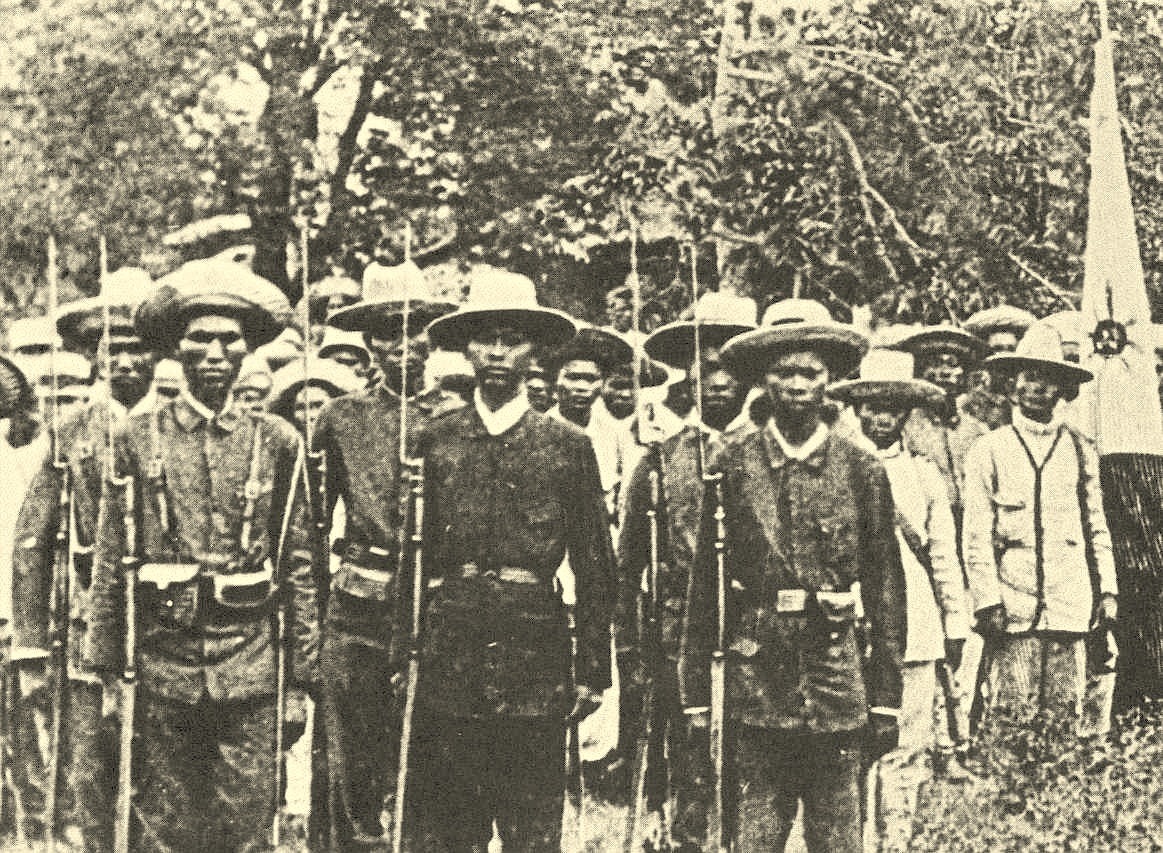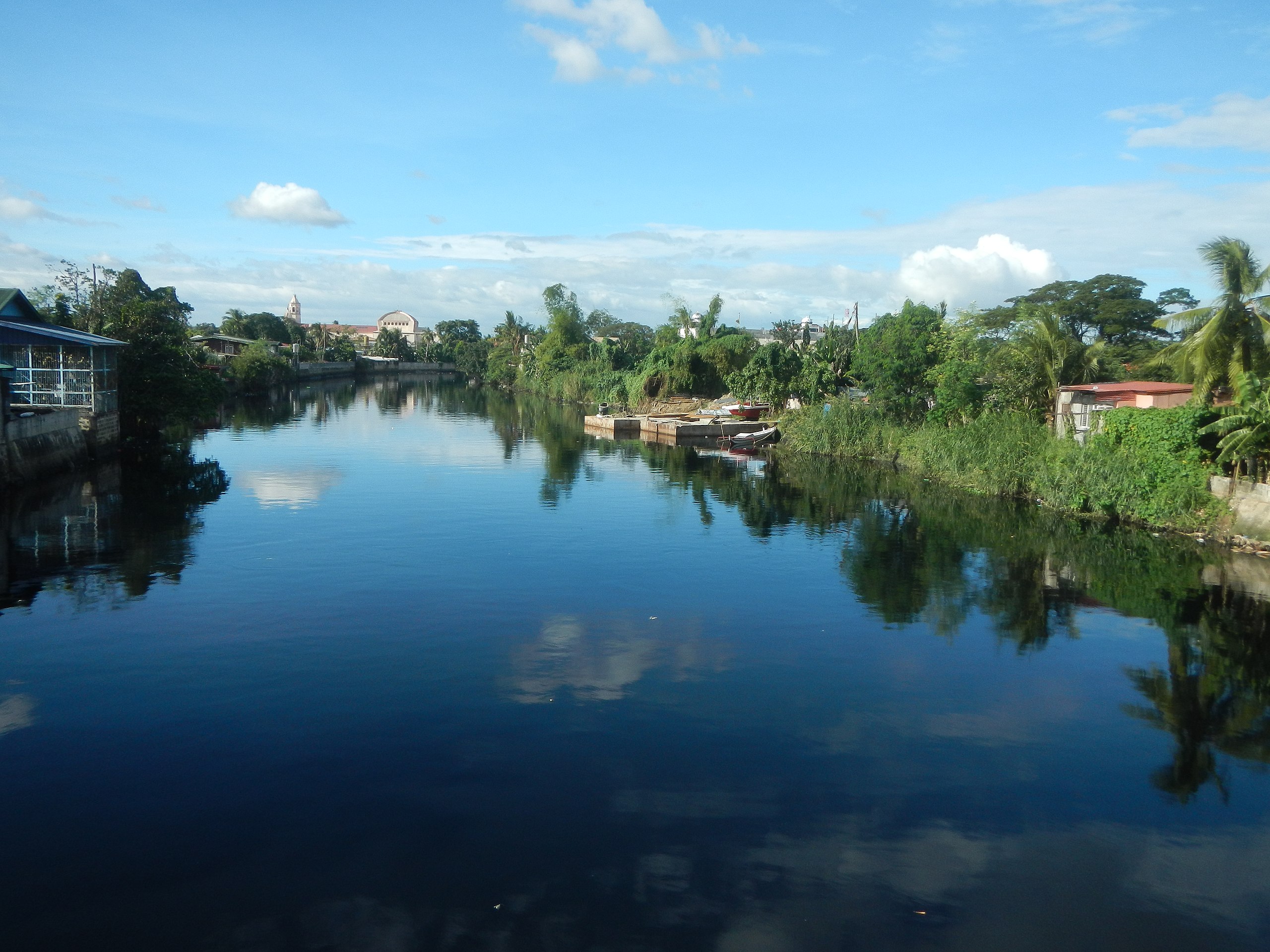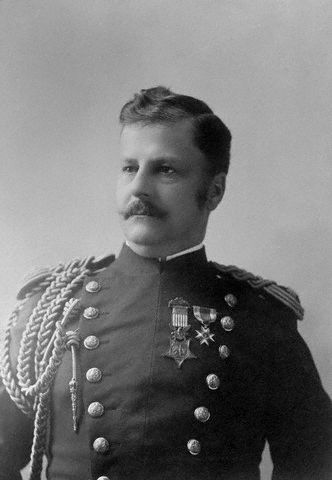Americans Advance To Malolos, March 24-31, 1899
Brig. Gen. Arthur C. MacArthur Jr.’s column advanced along the Manila-Dagupan railway to the north. Malolos, the Filipino capitol, and the capture of Aguinaldo were the prime objectives. But it had to overcome defenses put up by the Filipinos along the way.
The Americans estimated Filipino strength at about 30,000 men.
Battle of The Tuliahan River, March 25-26, 1899
The Battle of the Tuliahan River comprises 6 related engagements: Malabon (March 25-26), parts of Caloocan (March 25), San Francisco del Monte (March 25), Polo (March 25), Malinta (March 26) and Meycauayan (March 26).
Ten US regiments were engaged. At Malabon, the Americans suffered 16 killed and 130 wounded; the Filipinos lost 125 men killed and 500 wounded.
On March 25, the Americans advanced towards Malabon (near Caloocan). Describing their adventures in Malabon, Anthony Michea of the Third Artillery wrote: “We bombarded a place called Malabon, and then we went in and killed every native we met, men, women, and children. It was a dreadful sight, the killing of the poor creatures. The natives captured some of the Americans and literally hacked them to pieces, so we got orders to spare no one.”
On the road to Malabon. Huts that had to be burned to keep natives from re-entering the same and doing a bushwhacking.
The Manila correspondent of the Philadelphia Ledger reported, “Our men have been relentless, have killed to exterminate men, women, children, prisoners and captives, active insurgents and suspected people from lads up to 10, the idea prevailing that the Filipino was not much better than a dog . . .” (In Cabugao, Ilocos Sur, on June 21, 1900, five US soldiers —-John Wagner, Edward Walpole, Harry Dennis and John Allance and a Private Meeks—-who were sickened by the atrocities perpetrated by their fellow Americans, deserted to the Filipino side; on Nov. 25, 1900, in the same town, another American, Private William Hyer, joined the Filipinos).
The Bulletin of San Francisco, California, in its March 27, 1899 issue, reports imminent capture of Emilio Aguinaldo. The Filipino leader was actually captured nearly two years later, on March 23, 1901
Battle of Marilao River, March 27, 1899
On March 27, 1899, seven US regiments assaulted Garcia’s entrenchments. The 1st South Dakota Volunteers and the 3rd US Artillery, acting as infantry, were thrown forward.
The South Dakotas charged across an open space on the east of the railway to the edge of some woods. They lost 10 killed and 11 wounded, including 3 lieutenants.
The 3rd US Artillery charged on the edge of the railroad and lost 2 killed and 7 wounded.
Filipinos east of the Marilao river offered a stubborn resistance. But they were soon forced to retreat.
Overall, American losses were 14 killed and 65 wounded. Filipino losses were 90 killed and 30 taken prisoner.
The Atlanta Constitution, in its March 28, 1899 issue, reports stiff resistance put up by the Filipinos
Americans Close In On Malolos, March 29-31, 1899
On March 29, Brig. Gen. Arthur C. MacArthur, Jr. advanced to Bocaue, and at 11:45 am he advanced toward Bigaa (now Balagtas), and at 3:15 pm he turned toward Guiguinto, 3 1/2 miles (6 km) from Malolos. There was some fierce fighting in the afternoon. Troops crossed the river at Guiguinto by working artillery over the railroad bridge by hand and swimming mules against fierce resistance.
Ellis G. Davis, Company A, 20th Kansas Volunteers:
“They will never surrender until their whole race is exterminated. They are fighting for a good cause, and the Americans should be the last of all nations to transgress upon such rights. Their independence is dearer to them than life, as ours was in years gone by, and is today. They should have their independence, and would have had it if those who make the laws in America had not been so slow in deciding the Philippine question. Of course, we have to fight now to protect the honor of our country but there is not a man who enlisted to fight these people, and should the United States annex these islands, none but the most bloodthirsty will claim himself a hero. This is not a lack of patriotism, but my honest belief.”
Cpl. Robert D. Maxwell, Company A, 20th Kansas Volunteers:
“Sometimes we stopped to make sure a native was dead and not lying down to escape injury. Some of them would fall as though dead and, after we had passed, would climb a tree and shoot every soldier that passed that way. Even the wounded would rise up and shoot after we passed. This led to an order to take no prisoners, but to shoot all.”
American author J.D. Givens’s: “Carrying tenderly those who have tried to slay us”. American soldiers load a wounded Filipino POW onto a train.
American photographer’s: “Died in action. These words are simple, but they speak volumes. They tell the sublimest act of one’s life; of his death for his country. The view of the battle field strewn with dead. The central figure is that of a hero as he died defending his country’s honor”.
There is an army supply train en route to Malolos. The wagons are hauled by a species of buffalo peculiar to the Philippines. It is a patient animal somewhat livelier than the American ox. It does the hard labor of the islands.



